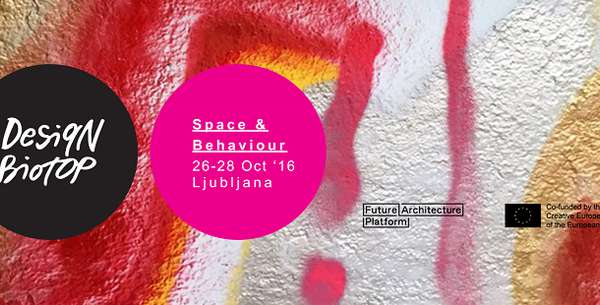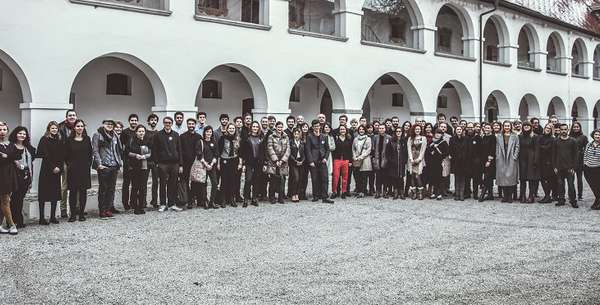Idea by
Aleksandra Zarek
https://www.linkedin.com/in/aleksandra-zarek-4bb28266
Call for ideas 2016
Bringing Back the Social into the Cities
Bringing Back the Social into the Cities

Many European cities are faced with the problem of adapting their dated building stock to current living standards. This can create a potential stimulus for improving the overall social cohesion in urban areas. However, isolated refurbishments at a scale of single buildings do not always guarantee such contextual regeneration.
This transformation proposal for the Kortepohja Student Village addresses the challenge of improving the quality of urban living through rejuvenating the existing building stock while embedding a holistic approach at a variety of scales.
Interventions range from an overall development plan through a masterplan to the transformation of Rentukka - central student social hub, proposing a regeneration scheme for both students and local residents.
The goal is to show how cautious transformation can be used as a holistic tool in consolidating connectivity, functionality and visual perception in urban areas, reestablishing them as social platforms.

Three interlocking scales of interventions include an overall development plan for Jyväskylä’s Kortepohja district, a masterplan for the Kortepohja Student Village and the detailed transformation of the central student community building “Rentukka”. This forms the platform for cohesive, socially sustainable rejuvenation.

The most holistic development plan seeks to improve connectivity and consolidation of the district, which is currently disturbed by undeveloped sites such as the Rautpohja Bay area. The proposal comprehends new recreational infrastructure around the reservoir. A timber boardwalk links the network of leisure facilities, including a wildlife observation pier that enhances the contemplation of the scenic environment.

The context of academically-oriented Jyväskylä, with the main campus of Jyväskylä University designed by Alvar Aalto, provided a strong rationale for rejuvenation of the Village whilst enhancing the quality of living and reestablishing its presence in Kortepohja and the city. This was done by redefining circulation, functionality and visual perception of the area. The sense of arrival from the centre and University as well as approach to Rentukka and the rear courtyard are now transformed.

The final scale deals with rejuvenating the student community building Rentukka. Due to the listed status of the Villages’s modernist core, masterplan interventions concentrated on its external areas while main changes at this scale occur in Rentukka’s interior. These are based on the concepts of openness, clarity of functions and better light performance. Student societies, previously scattered across the Village, are integrated into new areas within Rentukka, emphasising its social centrality.

The building exterior’s orthogonality is now counterbalanced by fluid curvilinear shapes in the interior, such as the main atrium void and skylight that bear reference to Alvar Aalto’s architecture across the Jyväskylä University campus and the city.
Bringing Back the Social into the Cities
Bringing Back the Social into the Cities

Many European cities are faced with the problem of adapting their dated building stock to current living standards. This can create a potential stimulus for improving the overall social cohesion in urban areas. However, isolated refurbishments at a scale of single buildings do not always guarantee such contextual regeneration.
This transformation proposal for the Kortepohja Student Village addresses the challenge of improving the quality of urban living through rejuvenating the existing building stock while embedding a holistic approach at a variety of scales.
Interventions range from an overall development plan through a masterplan to the transformation of Rentukka - central student social hub, proposing a regeneration scheme for both students and local residents.
The goal is to show how cautious transformation can be used as a holistic tool in consolidating connectivity, functionality and visual perception in urban areas, reestablishing them as social platforms.

Three interlocking scales of interventions include an overall development plan for Jyväskylä’s Kortepohja district, a masterplan for the Kortepohja Student Village and the detailed transformation of the central student community building “Rentukka”. This forms the platform for cohesive, socially sustainable rejuvenation.

The most holistic development plan seeks to improve connectivity and consolidation of the district, which is currently disturbed by undeveloped sites such as the Rautpohja Bay area. The proposal comprehends new recreational infrastructure around the reservoir. A timber boardwalk links the network of leisure facilities, including a wildlife observation pier that enhances the contemplation of the scenic environment.

The context of academically-oriented Jyväskylä, with the main campus of Jyväskylä University designed by Alvar Aalto, provided a strong rationale for rejuvenation of the Village whilst enhancing the quality of living and reestablishing its presence in Kortepohja and the city. This was done by redefining circulation, functionality and visual perception of the area. The sense of arrival from the centre and University as well as approach to Rentukka and the rear courtyard are now transformed.

The final scale deals with rejuvenating the student community building Rentukka. Due to the listed status of the Villages’s modernist core, masterplan interventions concentrated on its external areas while main changes at this scale occur in Rentukka’s interior. These are based on the concepts of openness, clarity of functions and better light performance. Student societies, previously scattered across the Village, are integrated into new areas within Rentukka, emphasising its social centrality.

The building exterior’s orthogonality is now counterbalanced by fluid curvilinear shapes in the interior, such as the main atrium void and skylight that bear reference to Alvar Aalto’s architecture across the Jyväskylä University campus and the city.

